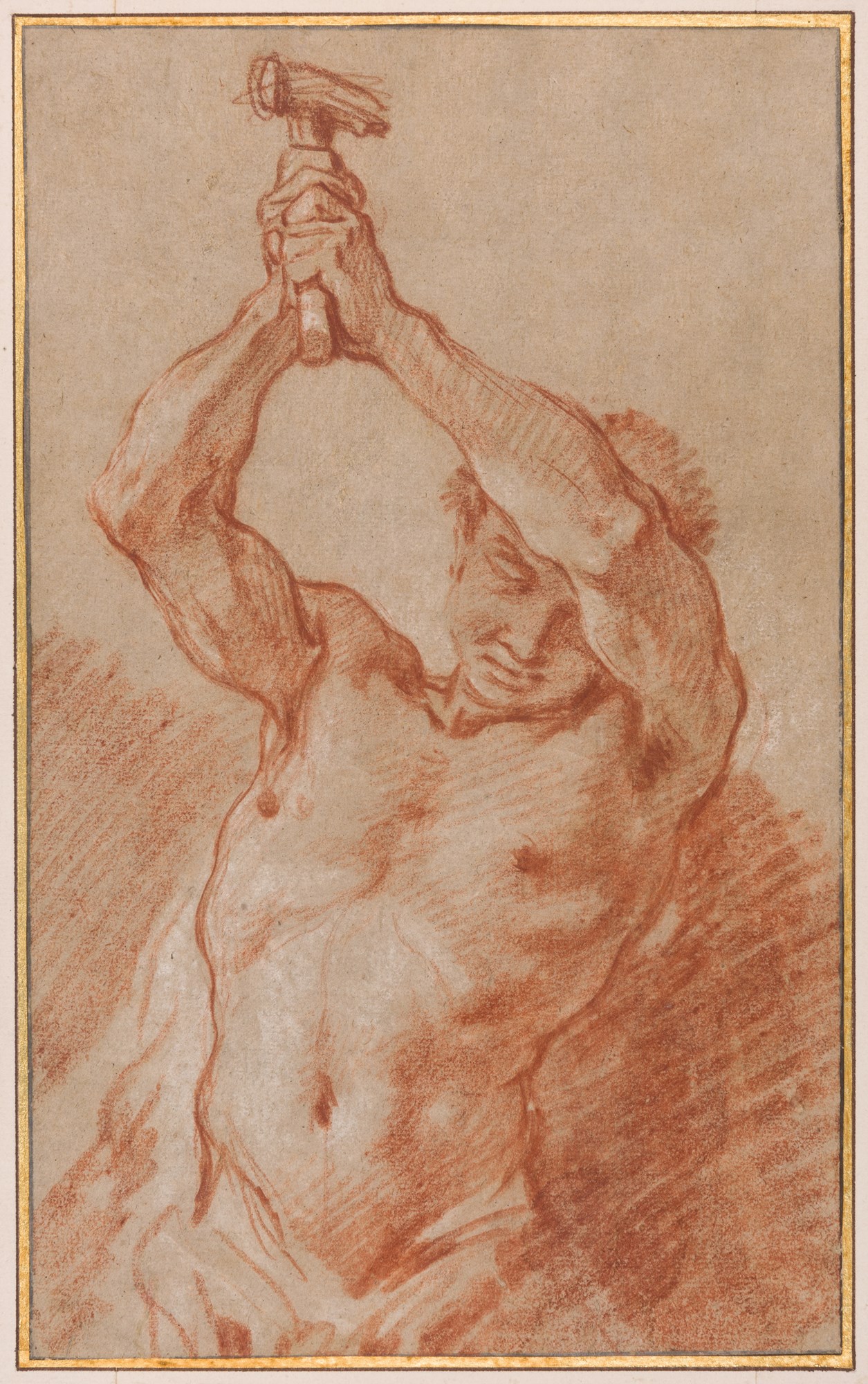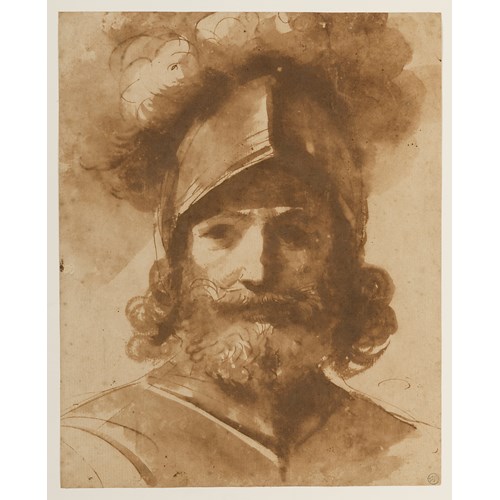François Boucher
Study of a Male Nude Holding a Hammer Above his Head
Period 18th century
Origin France
Medium Red chalk, with touches of white heightening, with framing lines in brown ink, on buff paper, backed
Dimension 31 x 18.9 cm (12¹/₄ x 7¹/₂ inches)
A number of drawings of male nudes by Boucher, however, were not done as teaching exercises but as preparatory studies for paintings. As Alastair Laing has noted of this drawing, ‘[It] is a genuine study for a painting, rather than a derivative from a painting, done for collectors.’ The drawing may be related to an important painting by the artist; the Venus at the Forge of Vulcan, dated 1747, in the Louvre. A monochrome oil sketch for the composition is in the Louvre, while a drawing for a different forger in the painting, executed in black chalk, is in the Musée Sainte-Croix in Poitiers. A study for the Cupid with arrows and a dove may have been made after the figure in the painting, as a drawing for a collector, rather than as a preparatory study for it. No other preparatory drawings related to the painting of Venus at the Forge of Vulcan are known.
The standing figure in the present sheet was later reused in a more ambitious composition of the subject of Venus at the Forge of Vulcan, designed by Boucher for a tapestry woven at Beauvais between 1754 and 1756, for which a grisaille sketch is in the Louvre.
To judge by his distinctively rugged appearance, the model for both of these drawings seems to be Jean-François Deschamps, a popular model at the Académie whom Boucher favoured for drawings and paintings of the male nude from around 1740 onwards. Boucher’s contemporary, the writer Claude-Henri Watelet, in his posthumously published Dictionnaire des beaux-arts, noted that ‘sometimes Deschamps was the ever-youthful Mercury, sometimes the terrible Mars, sometimes Neptune, Pluto, Jupiter…There was nothing about him, including his head, that could not sometimes be recognised, and one was astonished to see his somewhat Bacchic face become that of a hero or a God.’ Among stylistically comparable red chalk drawings of male nudes by Boucher, also posed by Deschamps, are two studies in a Swiss private collection.
Period: 18th century
Origin: France
Medium: Red chalk, with touches of white heightening, with framing lines in brown ink, on buff paper, backed
Dimension: 31 x 18.9 cm (12¹/₄ x 7¹/₂ inches)
Provenance: Anonymous sale, Paris, Hôtel Drouot, 29 June 1987, lot 3
Hazlitt, Gooden & Fox, London, in 1988
Anonymous sale, New York, Sotheby’s, 8 January 1991, lot 170
Librairie Michel Descours, Lyon, in 1996
Saretta Barnet, New York.
Literature: Possibly Alexandre Ananoff and Daniel Wildenstein, L’opera completa di François Boucher, Milan, 1980, p.111, under no.313; London, Hazlitt, Gooden & Fox, European Drawings: Recent Acquisitions, exhibition catalogue, 1988, unpaginated, no.63; New York, Thomas Le Claire Kunsthandel at W. M. Brady & Co., Catalogue IX: Master Drawings 1500-1900, exhibition catalogue, 1994, under no.29; London, Christie’s, Old Master Drawings, including 17th Century Italian Drawings from the Ferretti Di Castelferreto Collection, 2 July 1996, p.270, under lot 242.
Exhibition: London, Hazlitt, Gooden & Fox, European Drawings: Recent Acquisitions, 1988, no.63.
More artworks from the Gallery









